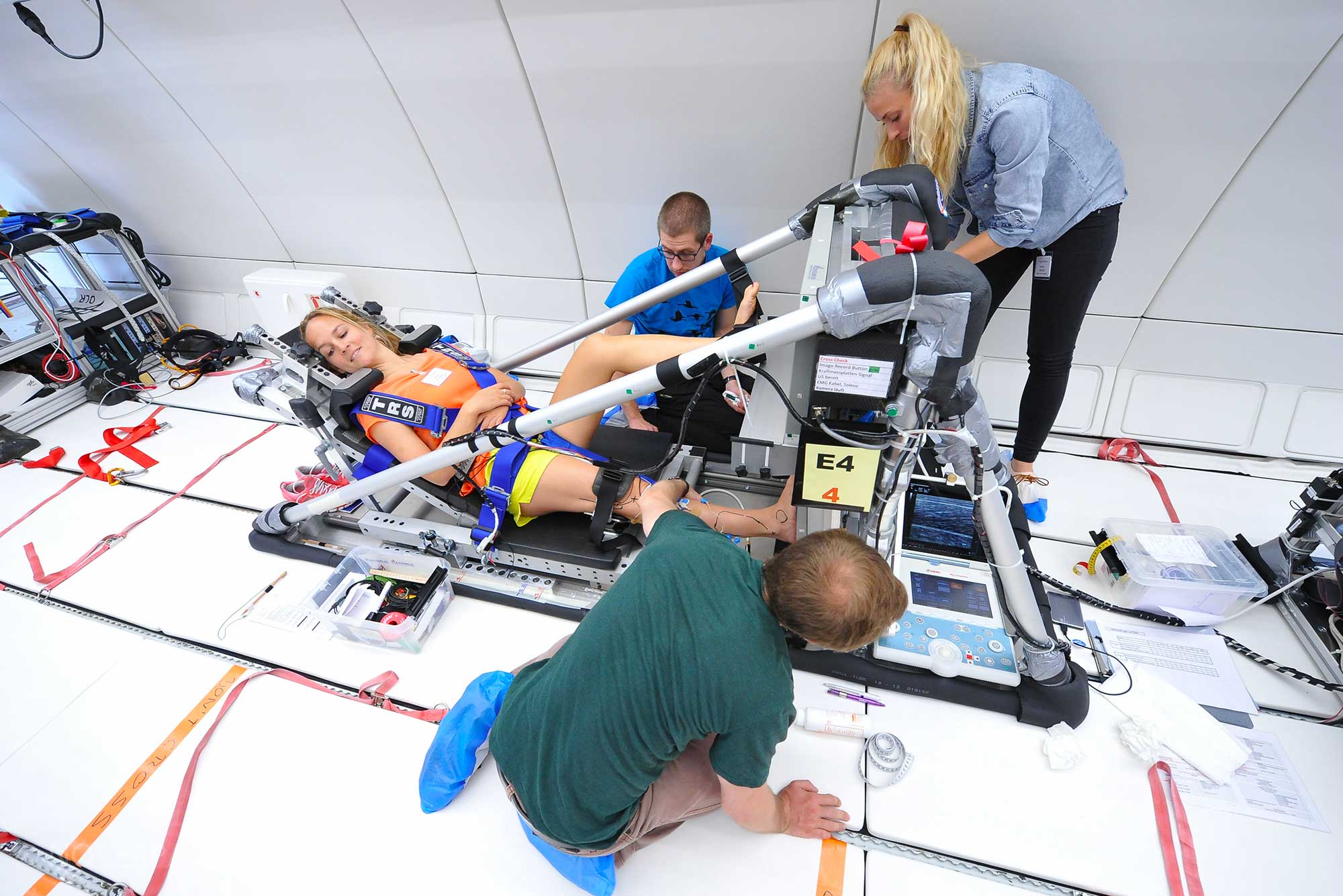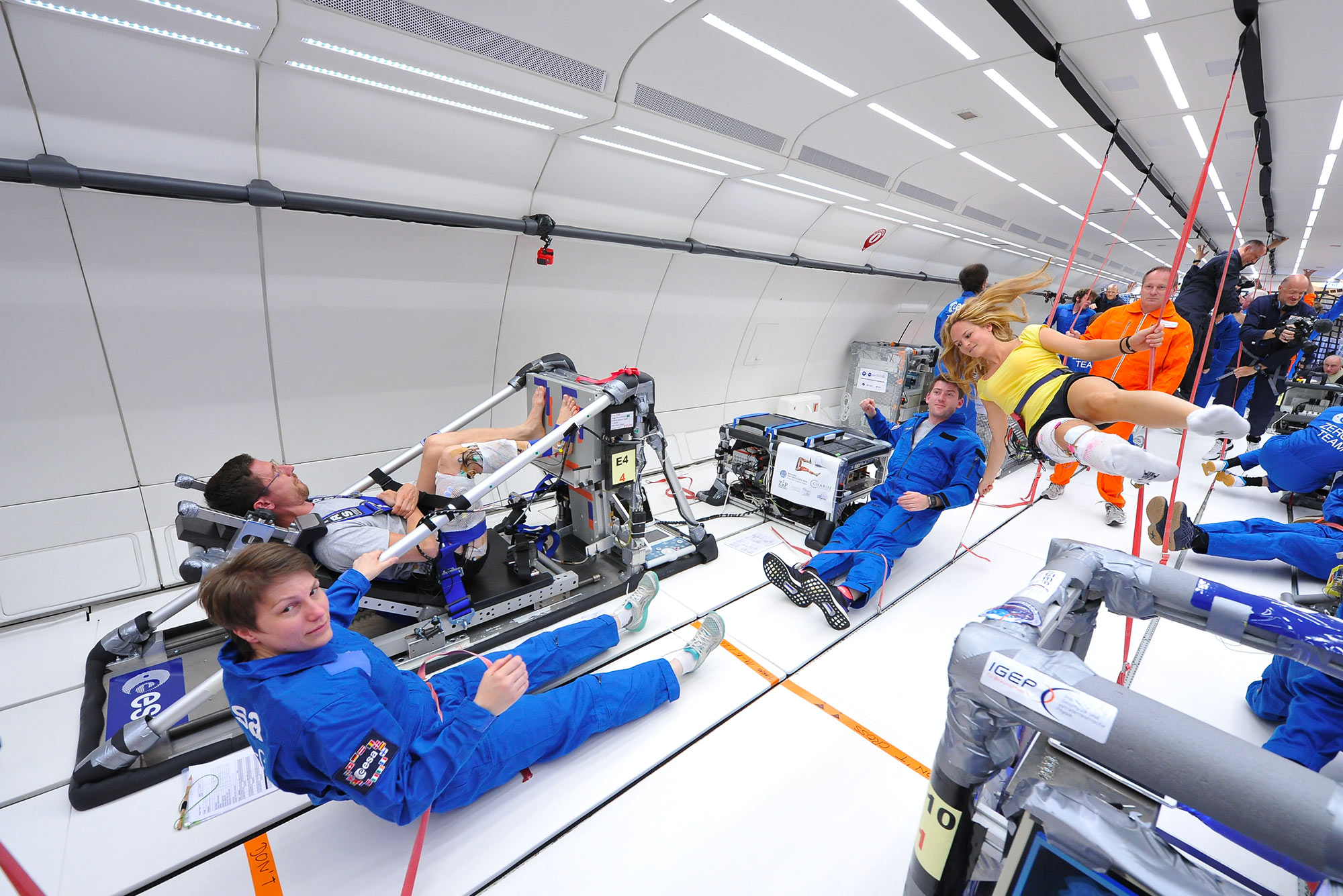This experiment is carried out in both microgravity and normal gravity to demonstrate a reduction in voluntary maximum strength and explosive strength during bending and extension.
Maintaining muscle mass and muscle performance
Maintaining muscle mass and muscle performance in astronauts on extended spaceflights requires high-load muscle exercises.
However, they may not be able to develop as much muscle strength in the lower limbs as they do on Earth. A possible mechanism would be to decrease the amount of certain nerve fibers at the neuromuscular junctions in microgravity, reducing nerve impulses that trigger voluntary muscle activation.
This may explain the modest effect of muscle exercise in preventing muscle atrophy in astronauts.
This experiment therefore seeks to demonstrate a reduction in maximum voluntary strength and explosive force during plantar flexion of the ankles and knee extension against resistance.
The experiment is conducted in both microgravity and normal gravity for comparison, with and without electrical muscle stimulation.
Muscular activity and behavior are studied by electromyogram and muscular ultrasound, and compared to the muscular force of hand gripping.

Principal investigator (PI)
Dr. Daniel Belavy
Deakin University Burwood Campus
Centre for Physical Activity and Nutrition Research
221 Burwood Highway
Burwood VIC 3125, Australien
Tel: +61 3 9244 6606
Belavy(at)gmail.com
Jun.-Prof. Dr. Kirsten Albracht
German Sports University Cologne
Institute of Biomechanics and Orthopaedics
Am Sportpark Müngersdorf 6, 50933 Köln, Germany
Tel: 0049 221 49825680
albracht(at)dshs-koeln.de
Flight scientific team
- Dr. Ramona Ritzmann, ramona.ritzmann(at)sport.uni-freiburg.de
- Dr. Andreas Kramer, andreas.kramer(at)uni-konstanz.de
- Prof. Dr. Albert Gollhofer, albert.gollhofer(at)sport.uni-freiburg.de
- Prof. Dr. Markus Gruber, m.gruber(at)uni-konstanz.de


